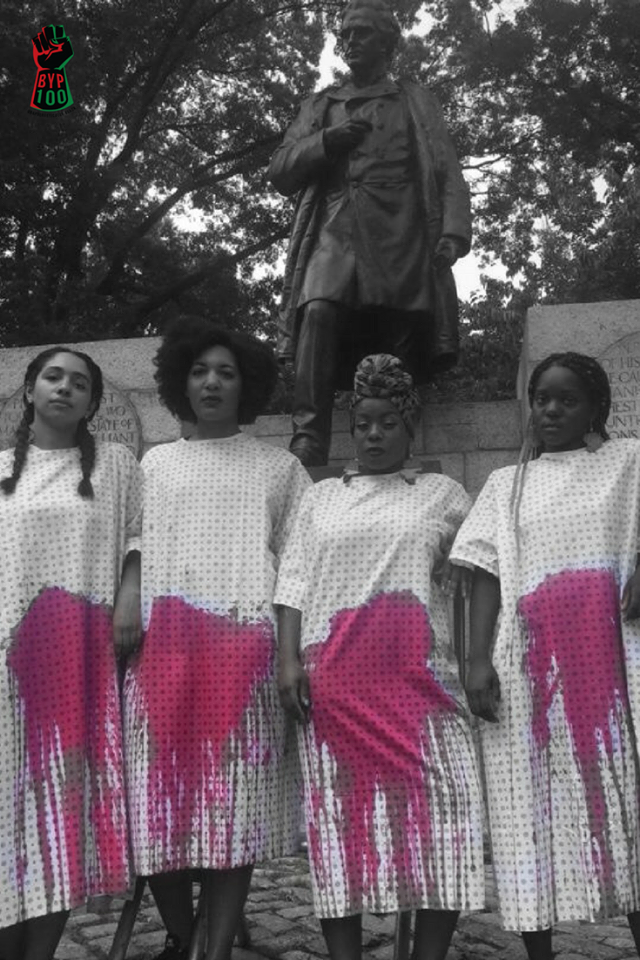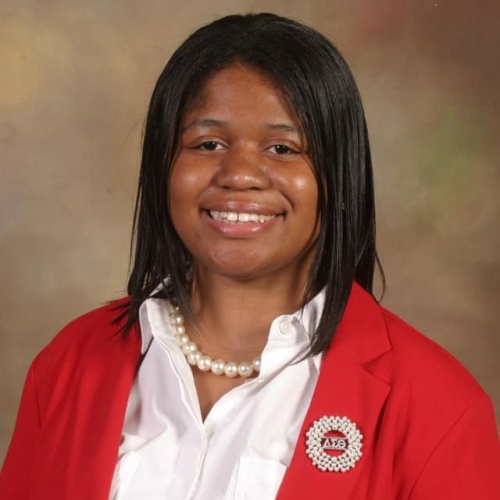Monuments to the father of gynecology honor brutality against Black women

On Aug. 19, members of Black Youth Project 100 staged a protest at the New York monument to Dr. James Marion Sims, an Alabama surgeon who performed surgeries on enslaved women without anesthesia. There are also monuments to Sims in Alabama and South Carolina. (Photo from the Black Youth Project Facebook page.)
Once again, white-supremacist violence — like that which killed Heather Heyer and injured dozens of others earlier this month during the "Unite the Right" rally in Charlottesville, Virginia — is forcing Americans to grapple with racism past and present.
Following the 2015 massacre by a Confederate flag-waving white supremacist of nine African-American members of Mother Emmanuel Church in Charleston, South Carolina, over 60 Confederate monuments were removed across the country. Since the recent violence in Charlottesville, at least another 21 Confederate statues have been taken down. Most of these monuments were erected during Jim Crow or the civil rights movement of the 1950s and 1960s, embodying white-supremacist backlash to Black progress.
But monuments to the Confederacy are not the only ones that perpetuate a distorted view of American history.
On Aug. 19, exactly one week to the day after Heyer was killed in Charlottesville, activists with the Black Youth Project 100 (BYP) staged a dramatic protest in New York City to make visible the intersections of racial, gender, and reproductive oppression in our monument building. Formed in 2013, BYP views its organizing through a Black feminist lens.
In a picture that has now gone viral, four BYP activists are seen standing beneath the statue of James Marion Sims, an Alabama surgeon known as the "father of gynecology," outside the New York Academy of Medicine on Manhattan's Fifth Avenue. Dressed in hospital gowns splattered in paint resembling blood, the women were drawing attention to the fact that Sims used enslaved Black women as involuntary human guinea pigs in his quest to discover a cure for vesicovaginal fistula, a condition developed during childbirth in which urine drains into the vagina.
Because of how they were raped and exploited as breeders, enslaved women were particularly prone to developing the physically and emotionally painful condition. But the slave masters who sent the women to Sims for treatment were less concerned about their suffering than their ability to produce more slaves. As for Sims, he thought the enslaved women were the perfect test subjects for his experiments because they could not object — and also because of his racist belief that Black people had a higher pain tolerance.
Between 1845 and 1849, in a makeshift hospital in his backyard in Montgomery, Alabama, he operated on at least 10 enslaved women without the use of anesthesia. He named three in his journal: Anarcha, Betsey, and Lucy. The women were forced to hold each other down as they underwent repeated operations fully conscious. Anarcha, the first woman Sims operated on, was subjected to over 30 surgeries during a four-year period. Through his brutal experiments, Sims eventually discovered a cure for fistula.
A few years later in 1855, Sims founded the Women's Hospital in New York — the first hospital specifically for women in the U.S. — where he treated countless patients for fistula. On them, though, he used anesthesia.
In 1894, 39 years after the Women's Hospital opened, the statue of Sims was dedicated in New York City. It originally stood in Manhattan's Bryant Park until it was moved to its current location 50 years later. The monument was the first in the United States erected in honor of a physician.
Two other monuments to Sims would soon follow. In South Carolina, where Sims was born in 1813, the state and the South Carolina Medical Association erected a monument to Sims at the capitol in Columbia in 1929. It's perched behind a statue of Reconstruction-era Gov. "Pitchfork" Ben Tillman, an outspoken white supremacist who led a paramillirary group known as "Red Shirts" during the state's violent election of 1876. A decade later, the Alabama Medical Association erected another monument to Sims at the capitol in Montgomery.
While the movement to address the nation's numerous Confederate statues is growing and sparking discussions and removals, there is no comparable effort underway to deal with the monuments to Sims. But that may be changing. Interviewed by MSNBC following the Charlottesville violence, Columbia Mayor Steve Benjamin spoke up about his city's monument to Sims.
"The most offensive statue I find on our state capital wasn't a soldier, it's J. Marion Sims, who's considered the father of modern gynecology who tortured slave women and children for years as he developed his treatments," Benjamin said. "It should come down at some point."
Tags
Rebekah Barber
Rebekah is a research associate at the Institute for Southern Studies and writer for Facing South.
